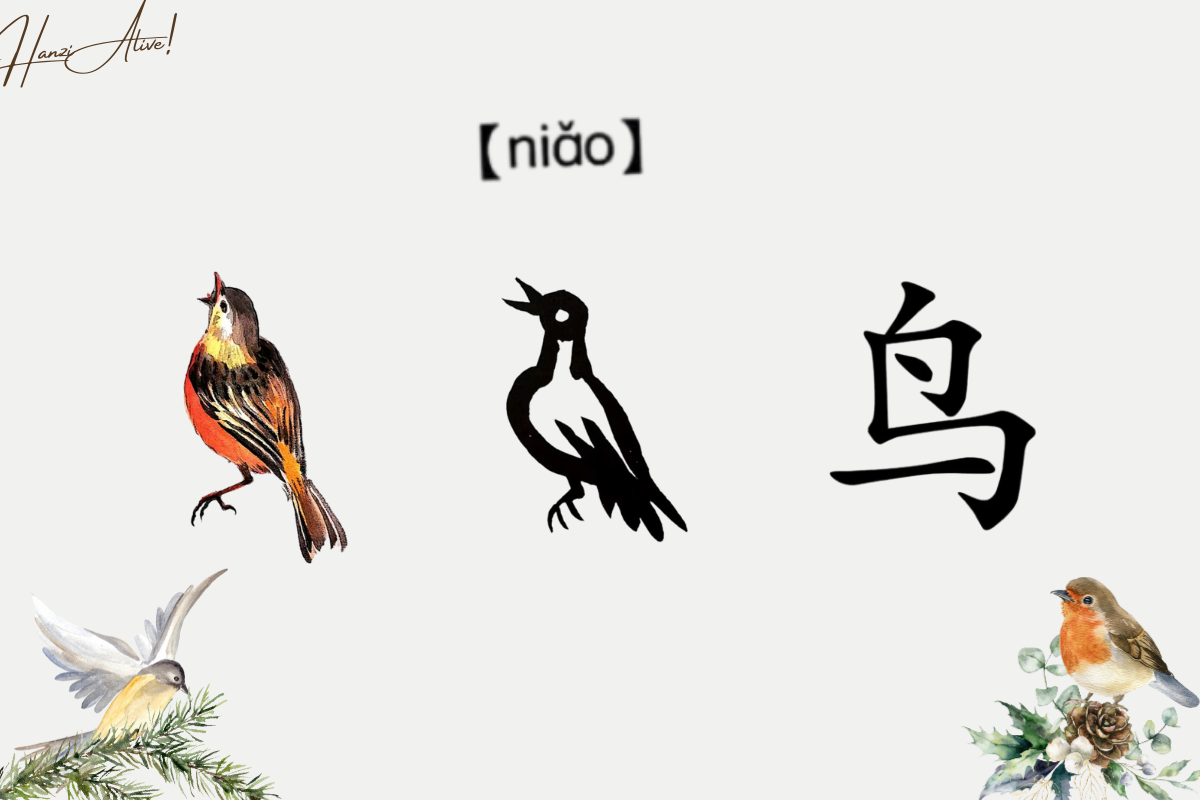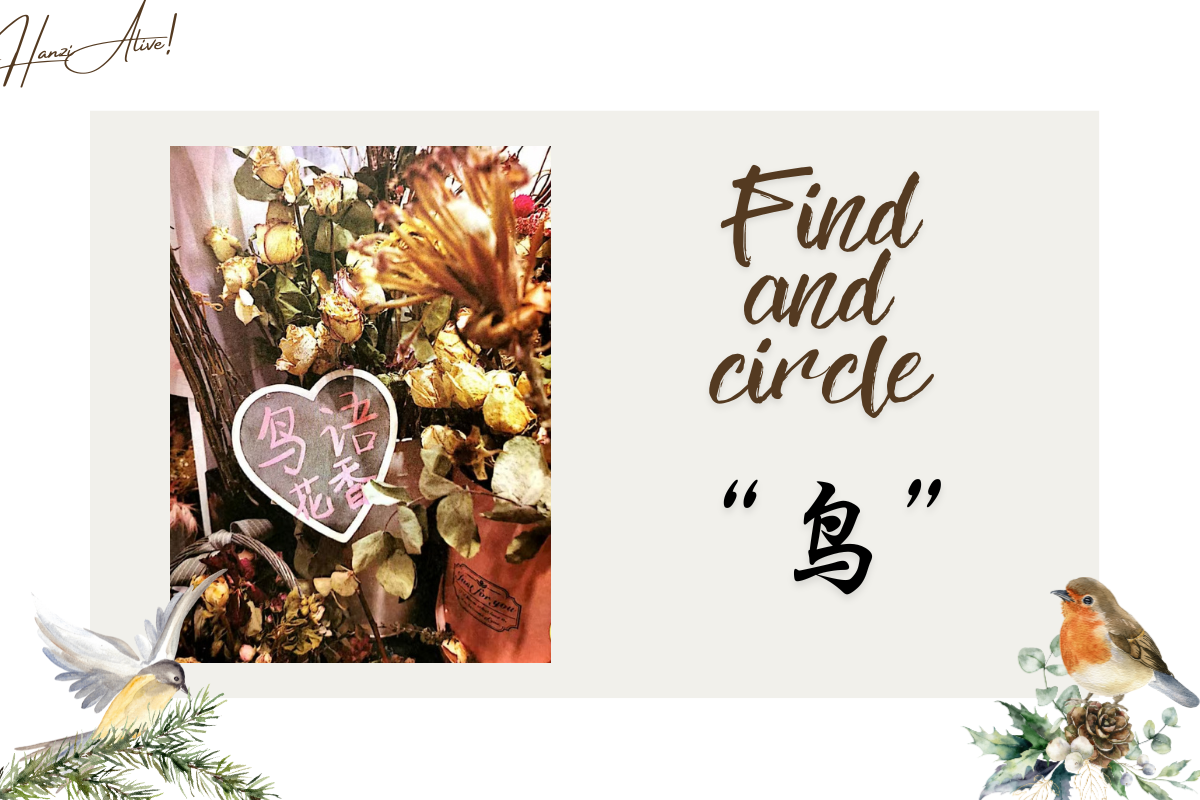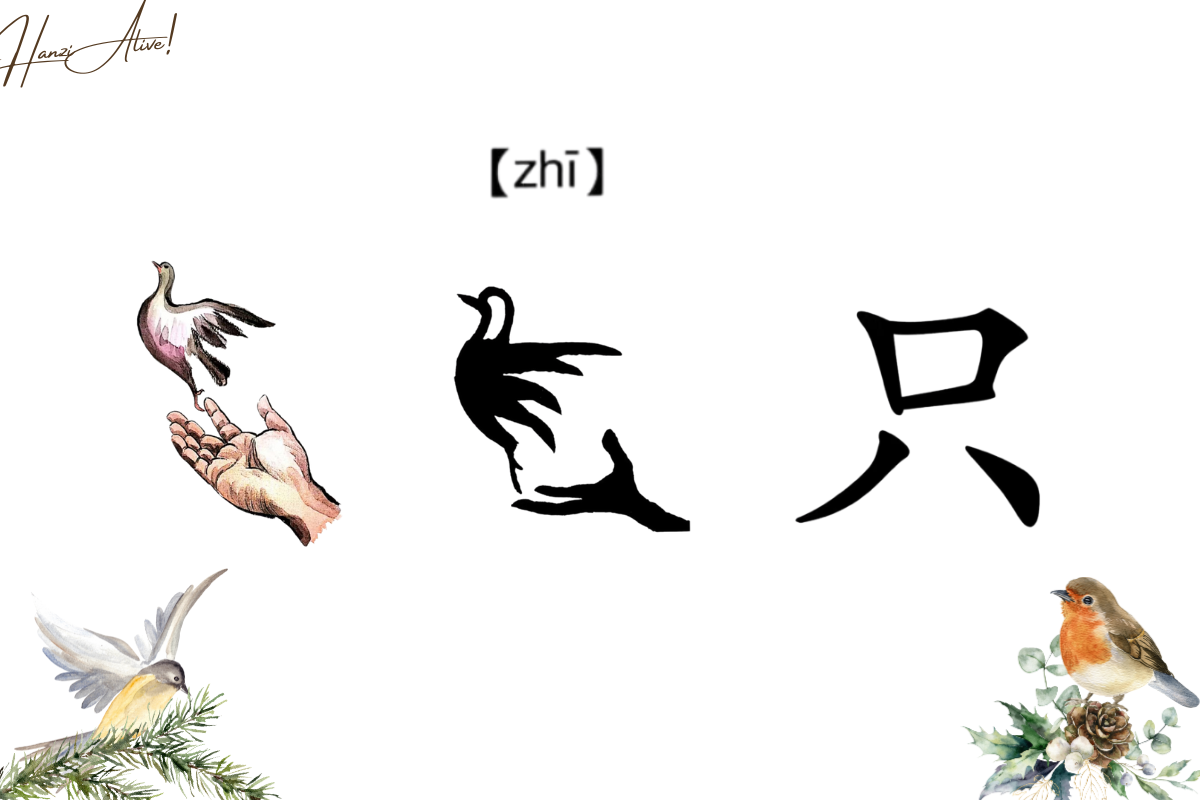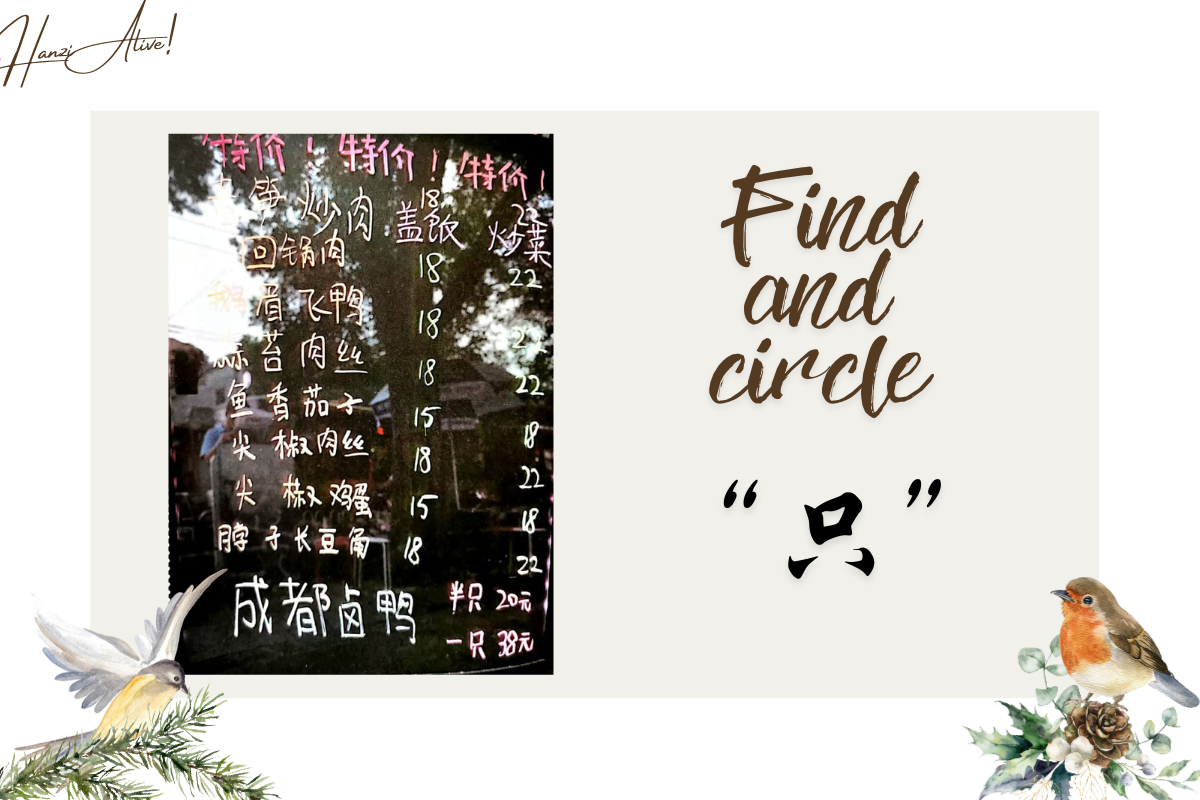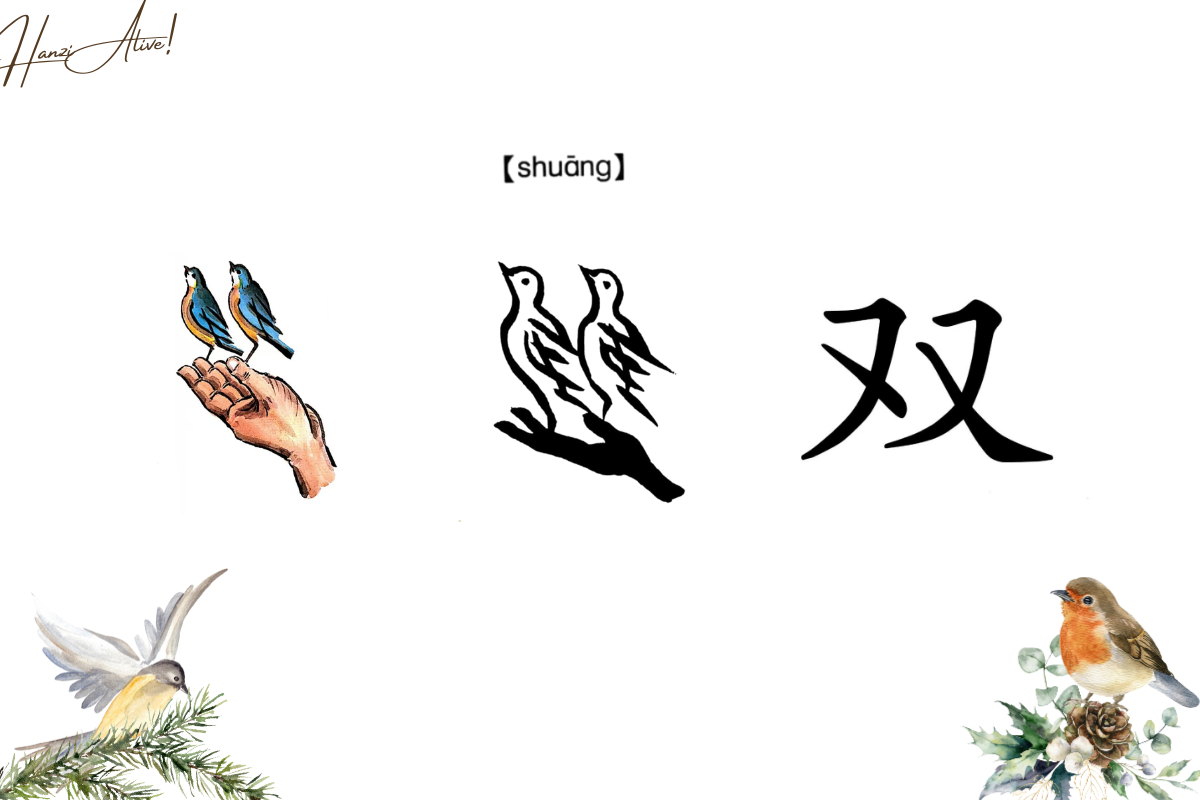Hanzi Alive!(21)
Chinese characters are like a math class in the palm of your hand - '鸟' (niǎo) is the graceful spirit with spread wings, '只' (zhī) is the delightful surprise captured in a single hand, and '双' (shuāng) is the proof of double happiness. These three characters, taught with feathers, demonstrate the romantic way Chinese people count.
鸟(niǎo)
Explanation
- The pictograph for "鸟" (bird) is quite clear. Notice the sharp beak, wings extended, and claws. '鸟' refers to a "bird."
Example
- The bird is singing in the tree.
鸟在树上唱歌。
niǎo zài shù shàng chàng gē. - Birds can fly in the sky.
鸟能在天空飞翔。
niǎo néng zài tiān kōng fēi xiáng.
Find and circle "鸟" in the image
只(zhī)
Explanation
- The pictograph of "只" (single) depicts holding a bird in one hand. This may have originated from a question asked in ancient times - "How many birds did you catch today?" The hunter would then hold up the bird in his hand. Today, "只" is used as a unit measure word, for instance, "三只鸟" means "three birds."
Example
- This duck is quacking.
这只鸭子在叫。
zhè zhī yā zi zài jiào. - There is a tiger.
那有只老虎。
nà yǒu zhī lǎo hǔ.
Find and circle "只" in the image
双(shuāng)
Explanation
- The symbol of two birds perched on a hand represents the character for "double." Chinese people appreciate this word and often use the phrase "good things come in pairs" or "one good thing is followed by another." Imagine a person proudly showing their friends, "Look! There is a pair of birds in my hand!" Something to be proud of!
Example
- I need a pair of shoes.
我需要一双鞋子。
wǒ xū yào yì shuāng xié zi. - She has beautiful eyes.
她有一双漂亮的眼睛。
tā yǒu yì shuāng piào liang de yǎn jīng.
Find and circle "双" in the image
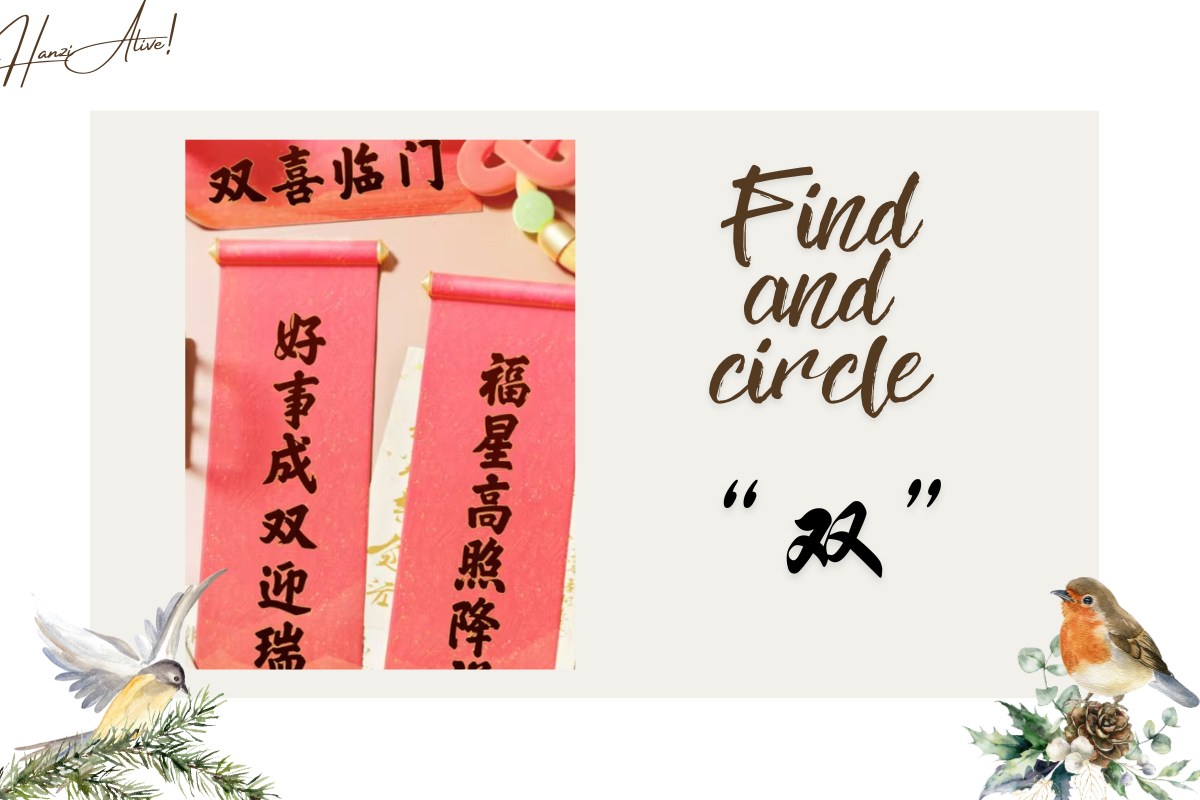
Now you have mastered this 'featherweight' formula: one bird equals "只," two birds equal "双." The next time you see a red paper with the phrase "双喜临门" (double happiness arrives), you will remember - the sweetest calculation for Chinese people is written with the wings of birds.
